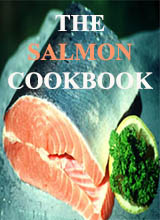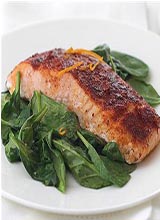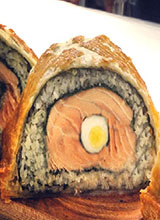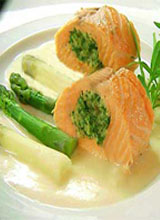The Atlantic Salmon is the King of Fish.
Wild Atlantic salmon are a fundamental element of the North Atlantic ecosystem. Their presence and relative abundance in our rivers is a signal of both environmental and economic well-being.
As we reflect over the life cycle of the Atlantic salmon, one has to marvel at the tremendous trip it makes after leaving the
river estuaries, venturing out to an ocean odyssey, in some cases going over three thousand miles to return unerringly to its river of origin.
Unlike the Pacific species that comes home to spawn and die,
The King of Fish comes home to spawn, and goes back for another perilous power-packed captivating journey at sea.
This cycle can repeat that two, three and even four times.
These big salmon are known as multi-sea-winters (MSW)salmon, the trophies of a few rivers.
Except for differences in ocean feeding grounds, all wild Atlantic salmon share the same life-cycle.
They leave their natal rivers as 6-inch smolts and head to ocean feeding grounds where they feed on sand eels, capelin and other forage fish for at least one year.
Some salmon return to their natal rivers after only one sea-winter (1SW - often referred to as grilse).
This group is generally composed of predominantly male salmon with a small percentage of females who carry relatively few eggs compared to older salmon.
The large egg-rich female salmon that are critical to the survival of the species, return to the rivers after two or multi-sea-winters (MSW).




The Salmon Cookbook - Everything You Need to Know + 168 Recipes
Upon purchase, the book is immediately available to download and save to your PC, tablet or smartphone in PDF format (Adobe Acrobat, iBooks).
© 2025 Copyright by The Salmon Cookbook. All Rights Reserved.
